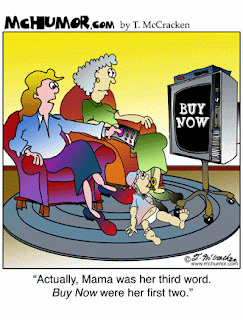A source of media that has such phenomenal impact on the generation today has certain responsibilities. Film makers have to strongly consider the influence that their creation will have on young minds. With majority of the movies made currently, most seem to have almost no sense of this responsibility. This issue needs to be addressed in the American cinema, but also the cinema I have grown up with, Bollywood.

Since the advent of globalization, there has been an increasing homogenization of cultures. The western ways have had a profound effect on the east. Movies have erased boundaries that used to separate the east and the west culturally to a noticeable degree. These blurry lines have brought confusion for the east. As an Indian I have grown up watching movies produced by Bollywood, and have witnessed the changes in Bollywood. It seems that Bollywood has lost its essence in its efforts to incorporate the western culture. There have been positives when technology and new methods of film making are concerned, but the content of Indian movies seems lost in translation. The Indian culture and the American culture are essentially very different, therefore when Indian movies are made based on the Western culture, they seems wrong and awkward. The Indian culture which is a much more orthodox and conservative one has been heavily influenced by the western culture. Sex, violence, drugs and alcohol abuse are now more explicitly displayed in Indian movies, now more than ever before. This depiction of content that may have a deep impact on the young minds is now available freely and is barely monitored. In the United States, the rating system is in effect and therefore “restricted” movies cannot be viewed by children. In India even though there is a rating system, it is not implemented effectively and therefore there is no regulation for what children watch.

Another effect of globalization in movies is the encouragement of consumerism. The clothes, accessories, cars, lifestyle depicted in the western movies are quickly seeping into movies all over the world. As viewers watch these movies, they want to buy goods and products that are shown in the movie. The actors in the movies are beautiful and glamorous, and the viewers live in this illusion that if they buy these goods they can live a better life. This is a faulty notion that leads to unbridled consumerism which encourages a shallow and materialistic lifestyle.
Globalization has also brought about a lack of originality in films. These days, when we watch a film, we feel as though we know what’s going to happen next. Movies have become extremely predictable, and several times are based on true stories, biographies or are remakes of existing films. This makes us wonder… is there no longer any creativity left in the film industry?

In Hollywood, we see film makers produce sequels of movies that have already done well in the industry. This shows us that the film industry is profit driven, and does not care about how original the film is. Further, the movies created are based on similar concepts. A movie meant for children tends to have animation and a movie for young adults will have action. For example, Dreamworks Studios produced ‘Shrek’ an animated film in 2001 and are expected to release ‘Shrek the Fourth’ in 2010. This just shows that producers and film writers no longer feel the need to be original. Through these sequels, they increase sales of other consumer products that attract their viewers such as Shrek toys, bottles and games. In addition, these films are made into musicals and end up becoming successful Broadway shows.

We notice the lack of creativity not just in Hollywood, but also in Bollywood. In India, there are some films that are made based on Hollywood movies. Although there is a lack of originality to an extent where the title is the same, people still watch these films. For example an Indian film titled ‘Mere Yaar ki Shaadi Hai’ which means it’s my friend’s wedding, is based on ‘My Best friend’s Wedding’ starring Julia Roberts.


Bollywood movies, at one point had something exclusive about them. However, today, most of these movies are based on Hollywood films, or are remakes of successful Bollywood films. Being a movie buff myself, I do not enjoy watching Indian movies that are based on Hollywood movies. I feel as though the lack of originality along with the predictability of films makes movies boring.
Movies are created with the motive of making profits and entertaining the viewers. However, the question arises whether films provide entertainment because the industry is market driven or if it is what people want. I believe that these movies are not only entertainment but also art. They do not fit the definition of art being a still object, a painting, or a sculpture; but some independent films grab our attention and challenge critical thinking. They stimulate us to think about what we have watched and make us feel connected to the film. In addition, the making of the film involves the combination of direction, cinematography, sound effects, costume designers, stylists and several other forms of art. With the use of special effects, and advanced technology, some films are created with the sole purpose of entertaining its audience, while other films are created in order to arouse its audience, and challenge critical thinking.

The development of film has brought about a lack of originality, and has to an extent killed creativity in film making. With globalization, it has become very difficult to produce a film that is different and based on a new concept. The conglomerates in this industry have an incentive of making profits and thus do not care whether the movie lacks originality or not. They use advances in technology to make these films, and at times create works of art, while at other times create pure entertainment.














